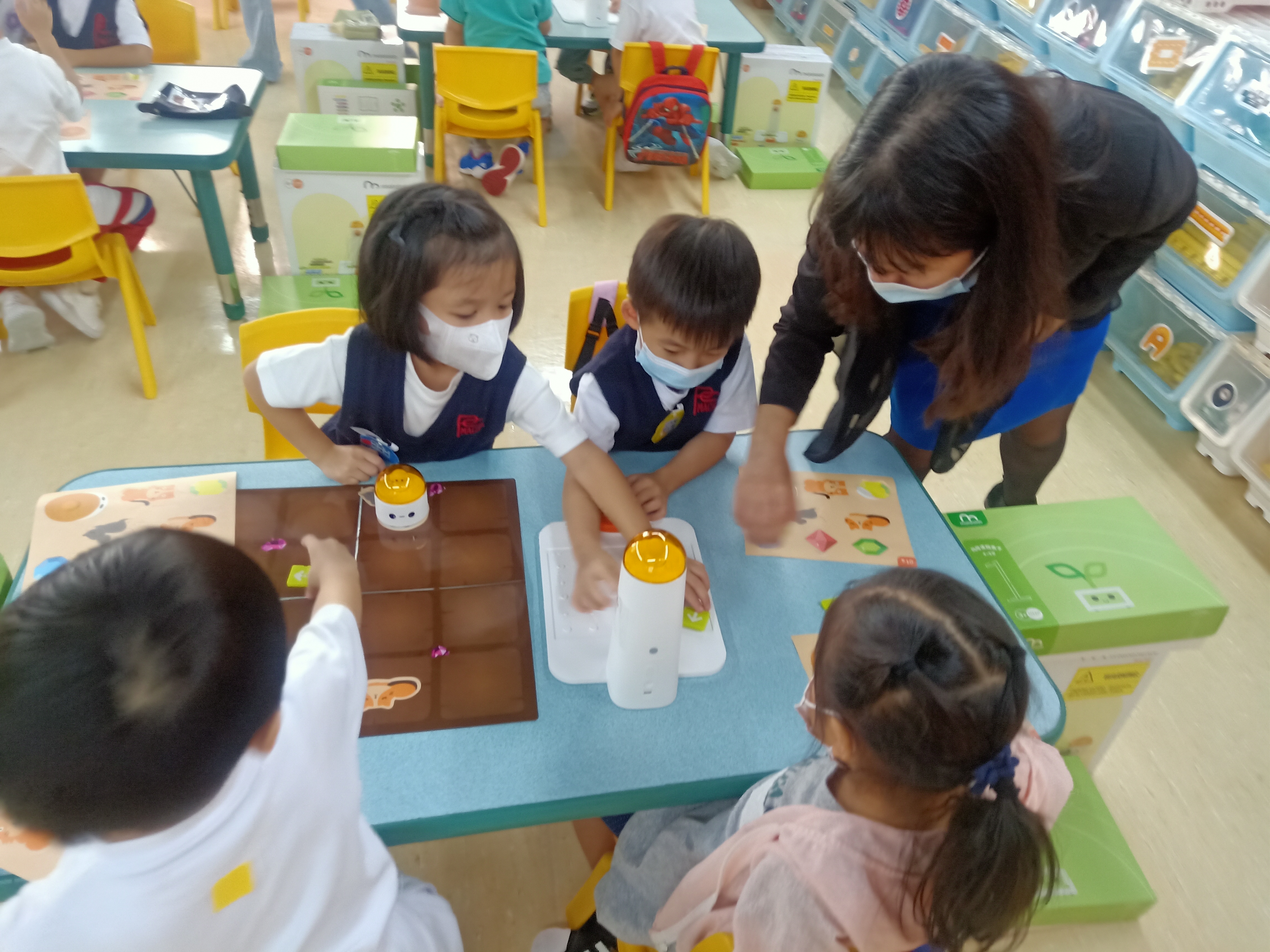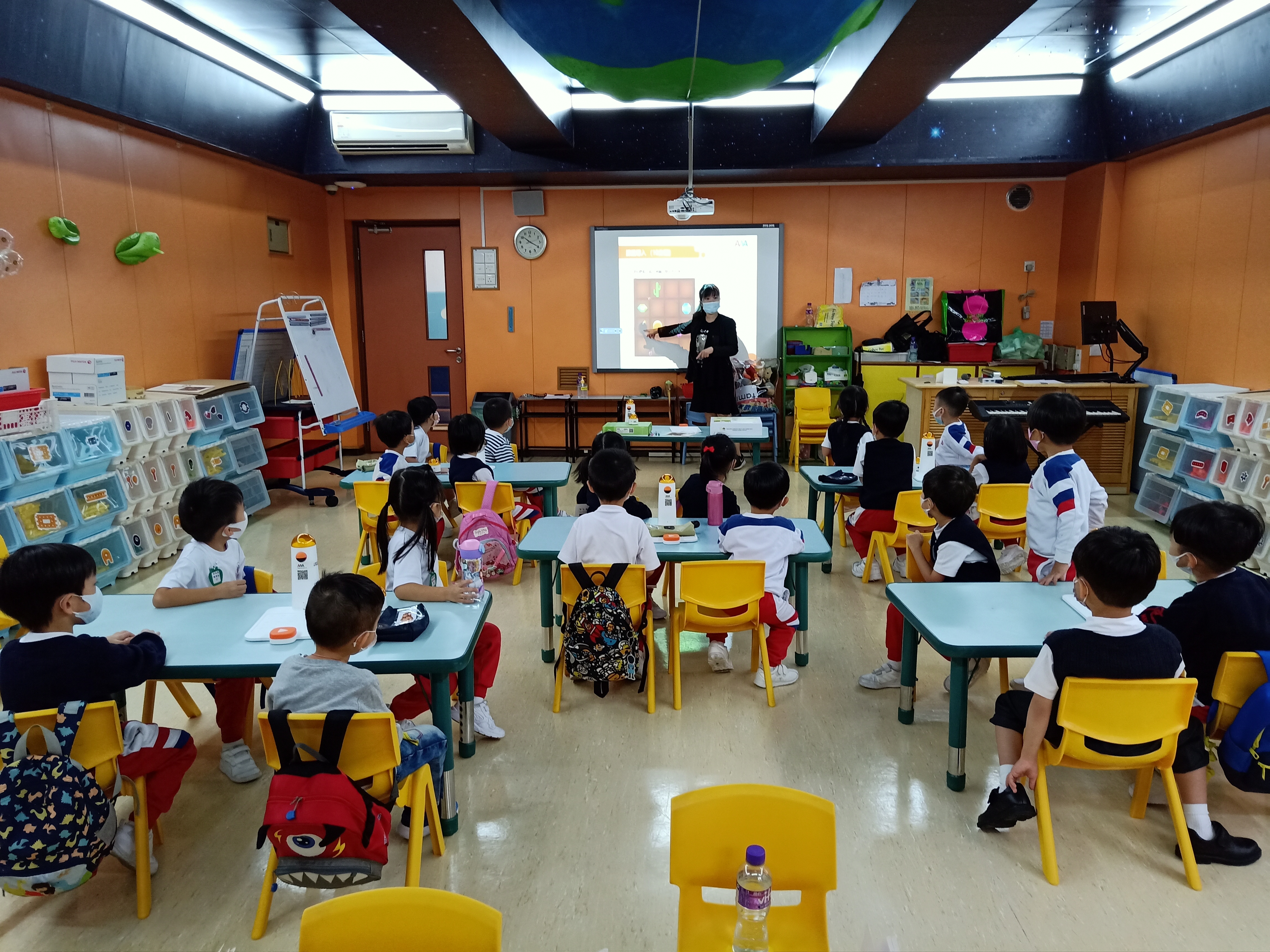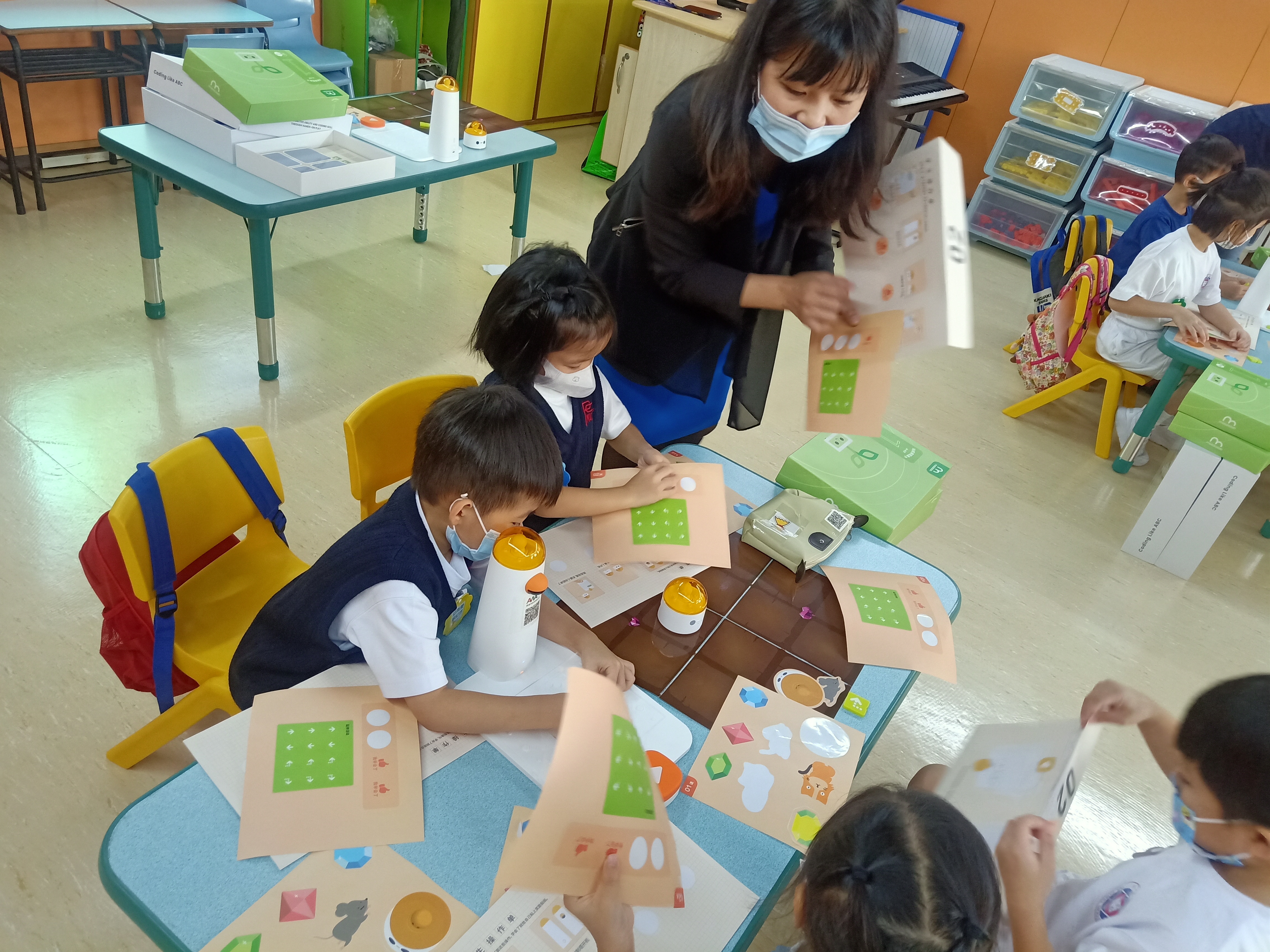Students and Teachers
Pui Ching School, which one of the famous schools in Macau. The school emphasis on artificial intelligence education. Their students have won various awards in different aspects.
Technology is one of their main focuses, they are the first who launched Matatalab lesson
as the extra-curriculum in Macau school for their kindergarten students.
Objective
The aim of using Matatalab robot is to support the areas in the curriculum (general skills, language and speech, mathematics, me and the environment, movement, music, art, robotics). Though teaching Matatalab, students are expected to understand fundamental computational thinking skills at a very young age. The Matatalab strives to provide innovative STEAM education solutions for educational institutions and families worldwide. A series of tangible coding products are developed by Matatalab. In addition, to which, the creativity of children has been stimulated by learning Matatalab Pro Set. With the help of Matatalab, it is possible to diversify learning activities. Students are expected to learn programming through playful and manual activities. The robot can be programmed to draw various graphic elements, or their favorite music can also be composed with their creativity.
Different topics are designed according to the lively example
Matatalab is merged into the kindergarten's curriculum. Our participants are kindergarten students who came from Macau Pui Ching Middle School. There is a total of 20 students who join the class as extra-curricular activities.
At the beginning of every class, we will share a new story with them, which arouse their interest and make it easier to understand the content, such as, the symbols of each block. The symbol is converted the conceptual meaning into visual aid. By showing students vivid visualized graphic examples, they can easily understand the underline meaning of each representation.
After introducing the basic concept of the Matatalab robot, students are ready and keen to practice what they have learned. Then, in the second part of the class, students are grouped in four to cooperate with each other in order to practice what has been taught. During the activity, 20- 25 minutes will be given to students to work on the tasks with their classmates. During this session, students are motivated and engaged in a positive effect. For example, first, they are provided a
good opportunity for exploration in a learning environment. The use of digital tools supports and activates children, arouses children 's interest. The robot can draw and play music which students like.
At the end of the session, students are not willing to stop. Students are enthusiastic about the Matatalab and emotionally involved in the class, especially when we show them the musical coding part..

What skills did it develop?
Students are learning how to cooperate with their classmates, as they are all around 4 to 5 years old. They also learn how to solve the problem step by step by moving the robots, they learned basic coding skills and problem-solving skills

What worked best and what was challenging?
Classroom management is the most challenging part for the teacher during the group activities, as they are excited to play the Matatalab Pro set with their classmates.

The reaction after having the class of Matatalab
The results are surprisingly incredible, students are excited to share stories with their parents after class, and even teach their parents how to play, which suggested that they have understood the knowledge thoroughly and have mastered it. They love the Matatalab and want to play it well, especially when we show them the musical coding part. At the end of the class, students are not willing to leave.

Share your comments upon the class using Matatalab
Our teacher is very enthusiastic about Matatalab learning tools, as it is a block-based, screenless and tangible programming tool that allows students to control the robot through a different kind of map. It is approachable for kindergarten students and lower grade students; students enjoy the moment to create different ways to solve the problems.